 Common Problem
Common Problem
 How to Use Settings (And 4 Other Ways) to Show Seconds in Windows 11 Taskbar Clock
How to Use Settings (And 4 Other Ways) to Show Seconds in Windows 11 Taskbar Clock
How to Use Settings (And 4 Other Ways) to Show Seconds in Windows 11 Taskbar Clock
Displaying the clock in the taskbar is one of the most basic and permanent features of Windows or any other operating system. However, Windows does not support all time units.
Earlier versions of Windows were able to display seconds updates in the system tracking clock. However, later versions of Windows dropped this feature and users had to rely on third-party apps to display the seconds on the taskbar.
New Feature Alert: Microsoft restores seconds in the taskbar clock in Windows 11
Starting with Windows 11 Dev build 25247, the expectation to display seconds in the taskbar clock has been The long-lasting feature is now back. If you're not a member of the Insider program, you may have to wait a while before this feature is rolled out to a stable public version.
Before Windows 10, users could modify the "ShowSecondsInSystemClock" registry key in the Registry Editor to display seconds. This forces Windows Explorer to update the taskbar and display the seconds in the system tray clock. However, starting with Windows 11, Explorer started skipping checking for this key anywhere in the registry.
How to Display Seconds in Taskbar Clock in 5 Ways
Adding this feature opens up several different native ways by which you can display seconds in Taskbar Clock number, and not just through 3rd party apps. Here's how to display seconds in the taskbar clock.
Method 1: Use Taskbar Settings
The easiest way to display seconds in the taskbar clock is to use the Taskbar Settings window. But keep in mind that you can only use this method if you got the feature in the latest update (see the section above for details). That's it:
Press Win I to open settings. Then click Personalization in the left pane.
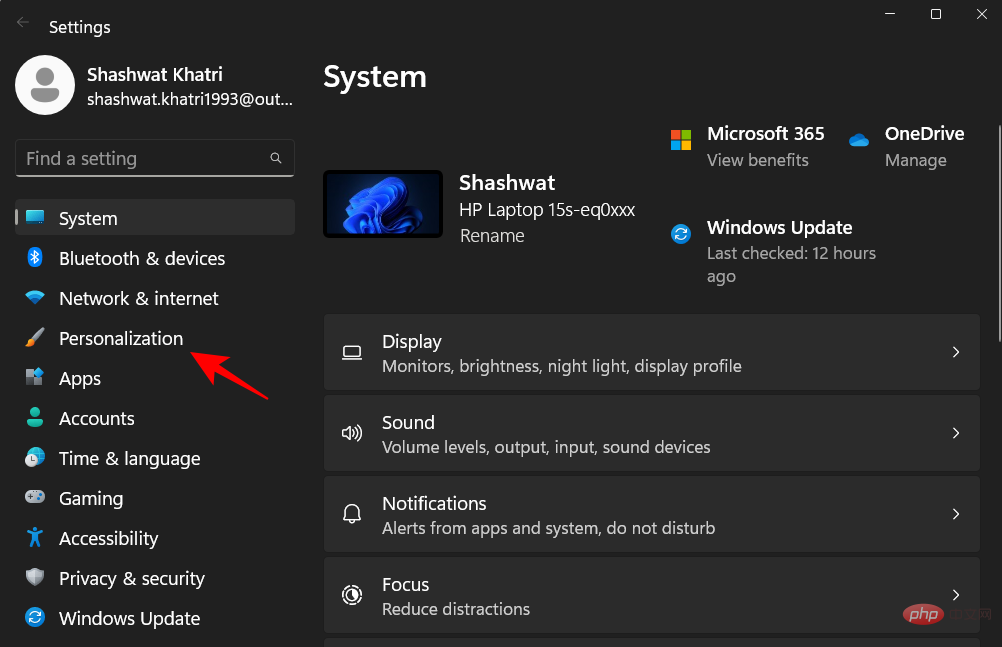
Scroll down on the right side and click Taskbar.
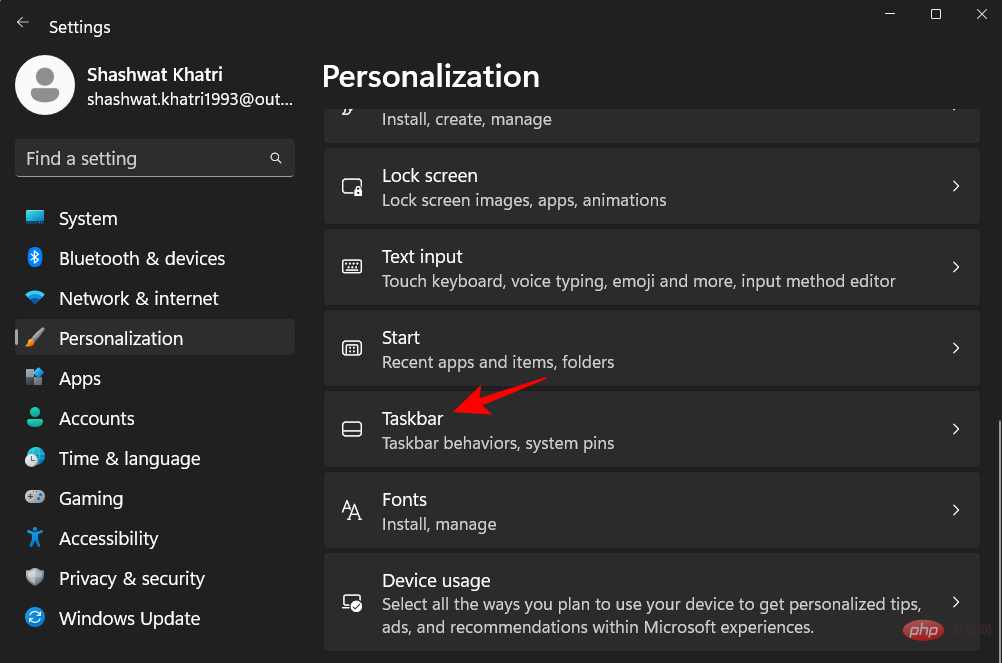
(Alternatively, you can access this settings page by right-clicking the taskbar and selecting Taskbar Settings.)
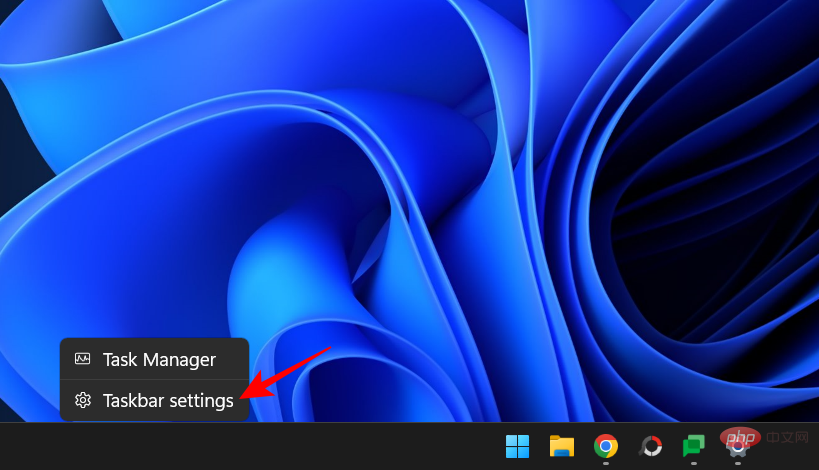
So, in the taskbar settings, select Taskbar Behavior.
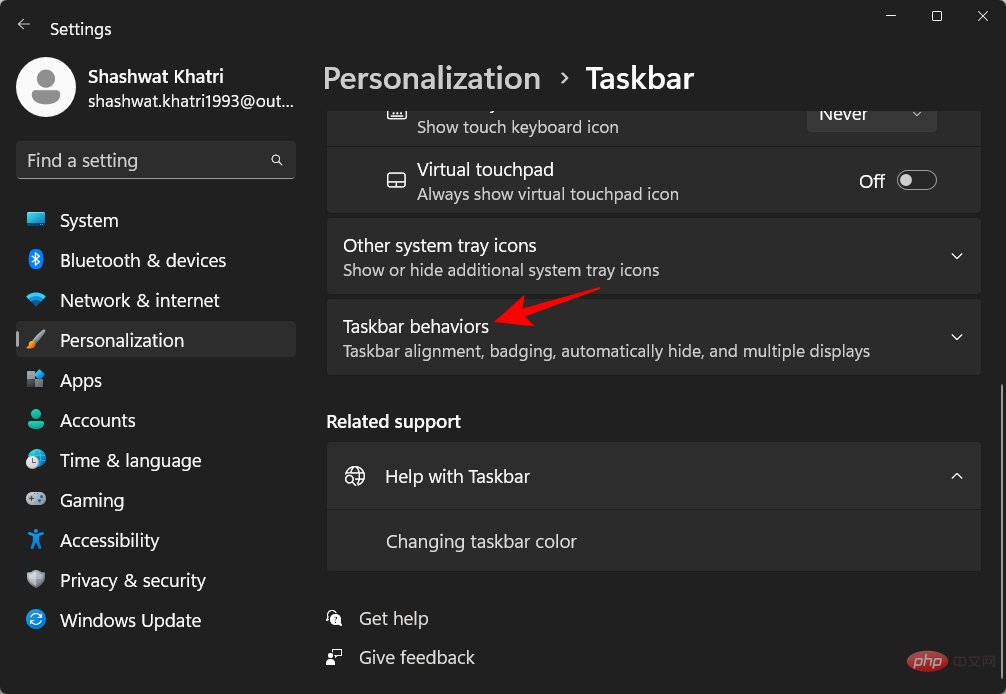
Now click and check the box next to Show seconds in system tray clock.
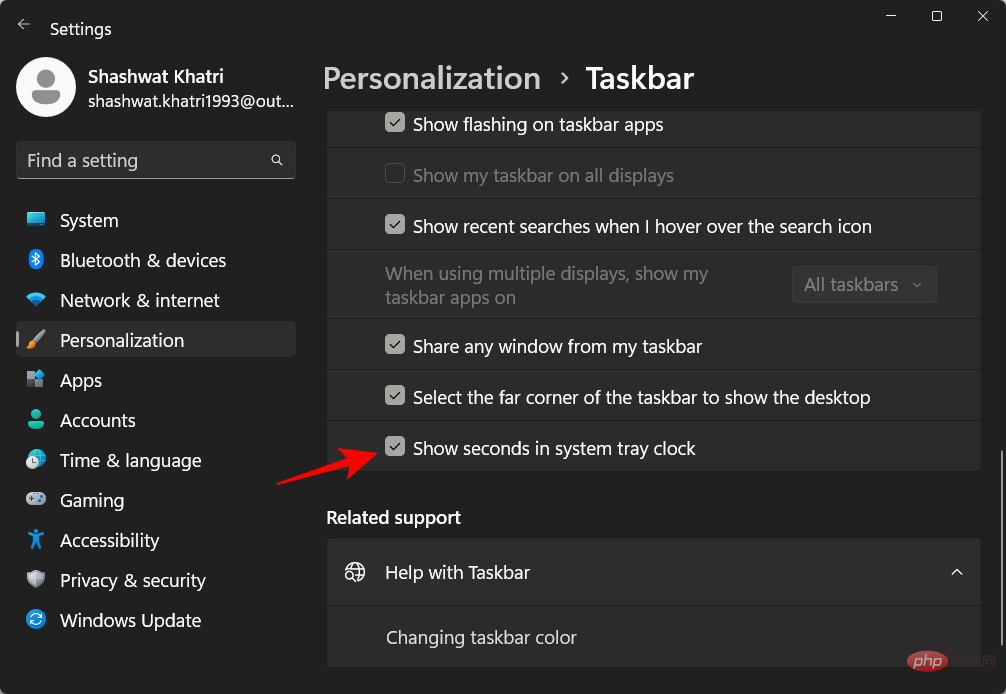
You should now see the seconds appear in the taskbar clock.
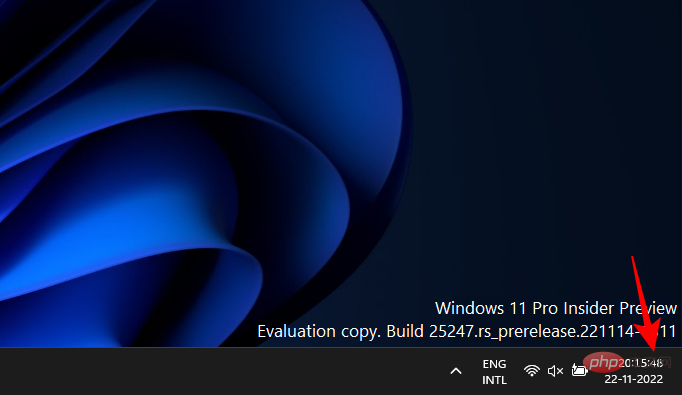
Method 2: Using the registry
The following describes how to use the registry to display seconds in the taskbar clock.
Press Start, type registry editor, and then press Enter.
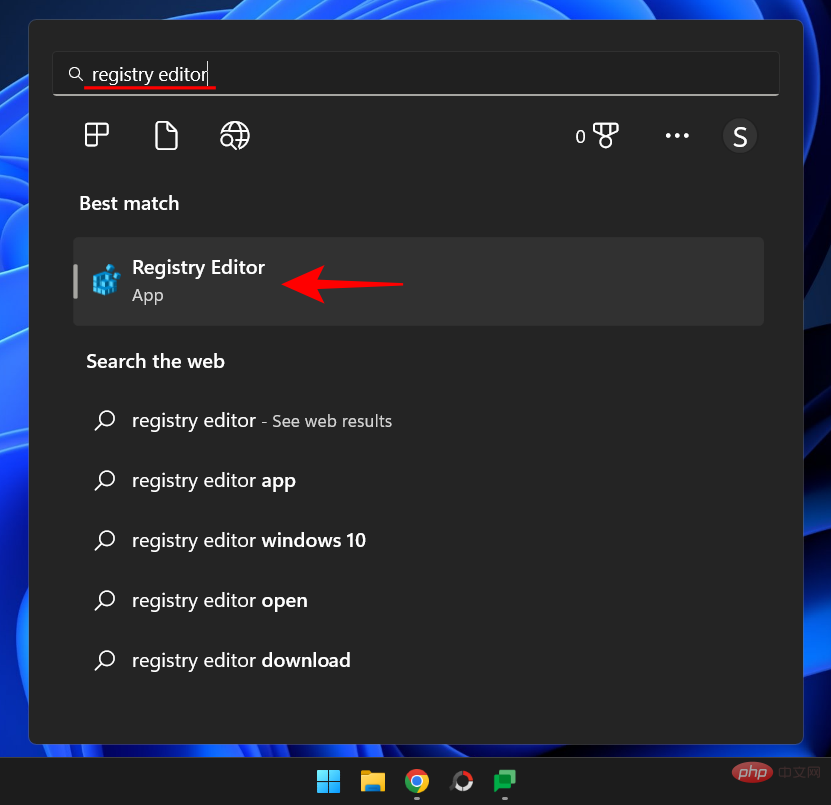
Navigate to the following address in the Registry Editor:
HKEY_CURRENT_USER\Software\Microsoft\Windows\CurrentVersion\Explorer\Advanced
Or copy and paste the above content into the address bar of the Registry Editor.
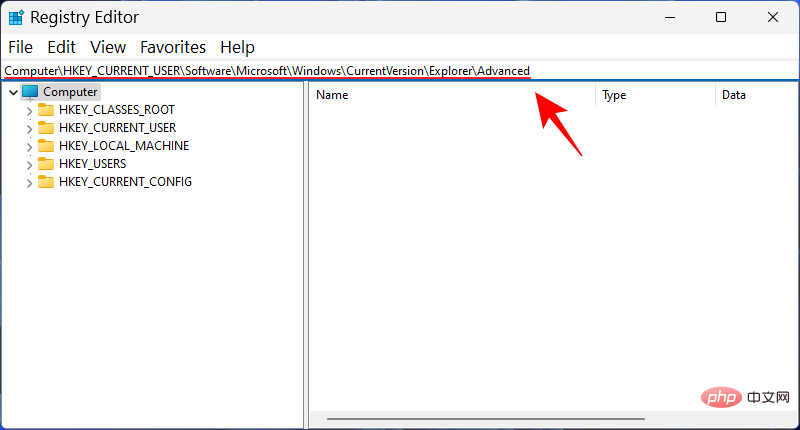
Then press Enter. On the right side, scroll down and double-click the ShowSecondsInSystemClock key.
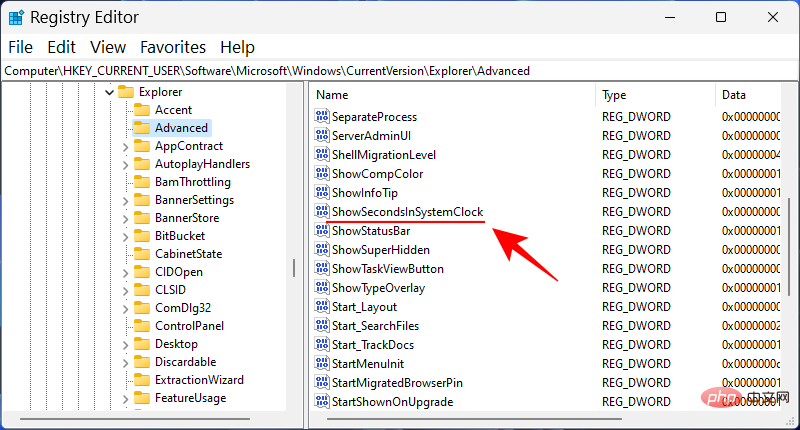
Here, change the value from 0 to 1.

Then click "OK".
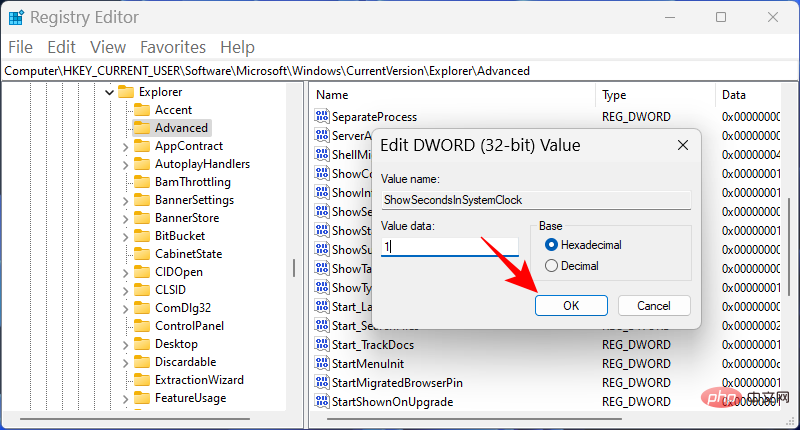
Method 3: Use Command Prompt (CMD) or Powershell or Windows Terminal
You can also use command terminals such as PowerShell and Command Prompt to implement changes and run Displays the seconds in the system tray clock. Here's how to do it using PowerShell:
Press Start, type PowerShell, right-click the result and select Run as administrator.
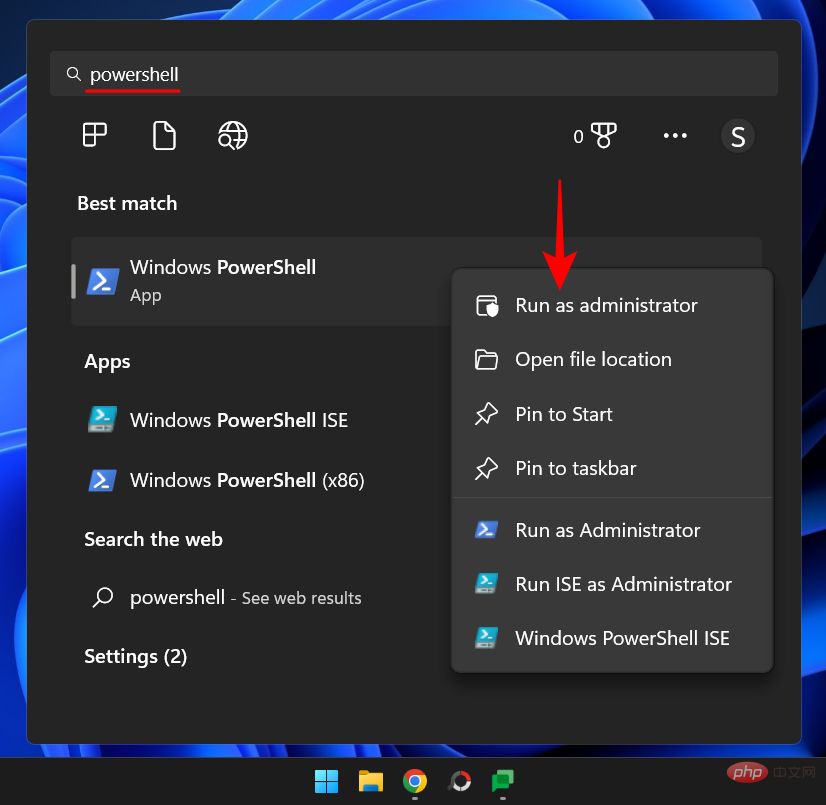
Now type the following command:
Set-ItemProperty -Path HKCU:\Software\Microsoft\Windows\CurrentVersion\Explorer\Advanced -Name ShowSecondsInSystemClock -Value 1 -Force
Alternatively, copy and paste the above into PowerShell.
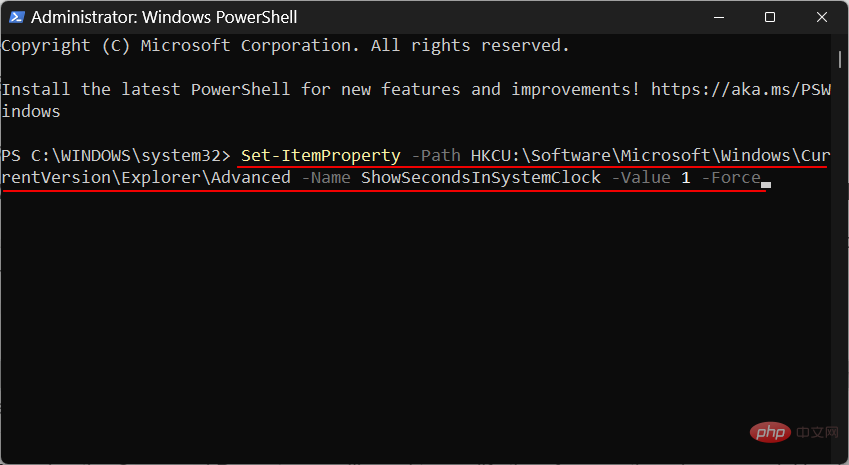
Press the Enter key. You should now see the seconds displayed in the taskbar clock.
If you prefer to use the command prompt, you will need to modify the above commands. Here's how to do it:
Press Start, type cmd, right-click the result (Command Prompt), and select Run as administrator.

Now type the following command:
powershell.exe Set-ItemProperty -Path HKCU:\Software\Microsoft\Windows\CurrentVersion\Explorer\ Advanced -Name ShowSecondsInSystemClock -Value 1 -Force
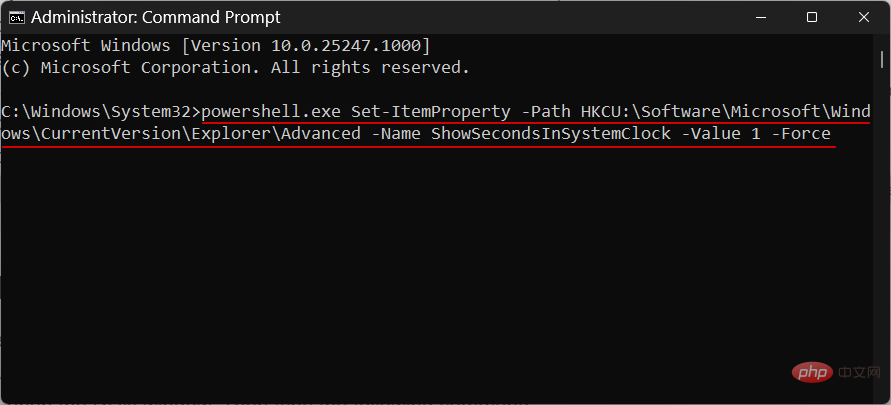
Press Enter. And did it.
Method 4: Using RUN
You can also use the Run dialog box to run the command given above. But the previous command needs to be slightly modified. Here's how to do it.
Press Win R to open the run window. Then type the following command:
cmd /c powershell.exe Set-ItemProperty -Path HKCU:\Software\Microsoft\Windows\CurrentVersion\Explorer\Advanced -Name ShowSecondsInSystemClock -Value 1 -Force
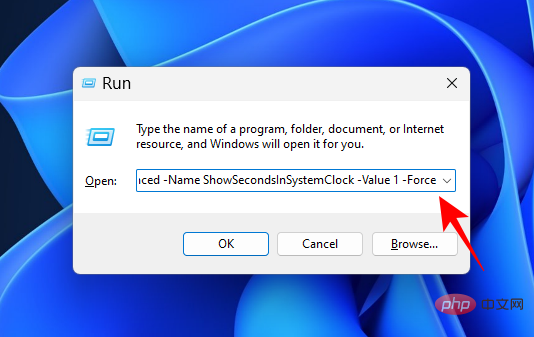
Then press Enter.
Method 5: Using ElevenClock (3rd Party Application)
Before adding this native option to display seconds in the system tray, users had to resort to third-party applications, For example ElevenClock. If for some reason you are unable to use the native option "Show seconds in system tray clock" via the above method, you may have no choice but to use this application.
Note: Before opting for this solution, you may want to try the fixes given below to check if everything is fine.
Download: Eleven Clock
First of all, please click on the link given above. Scroll down on the page and click Elevenclock.Installer.exe.
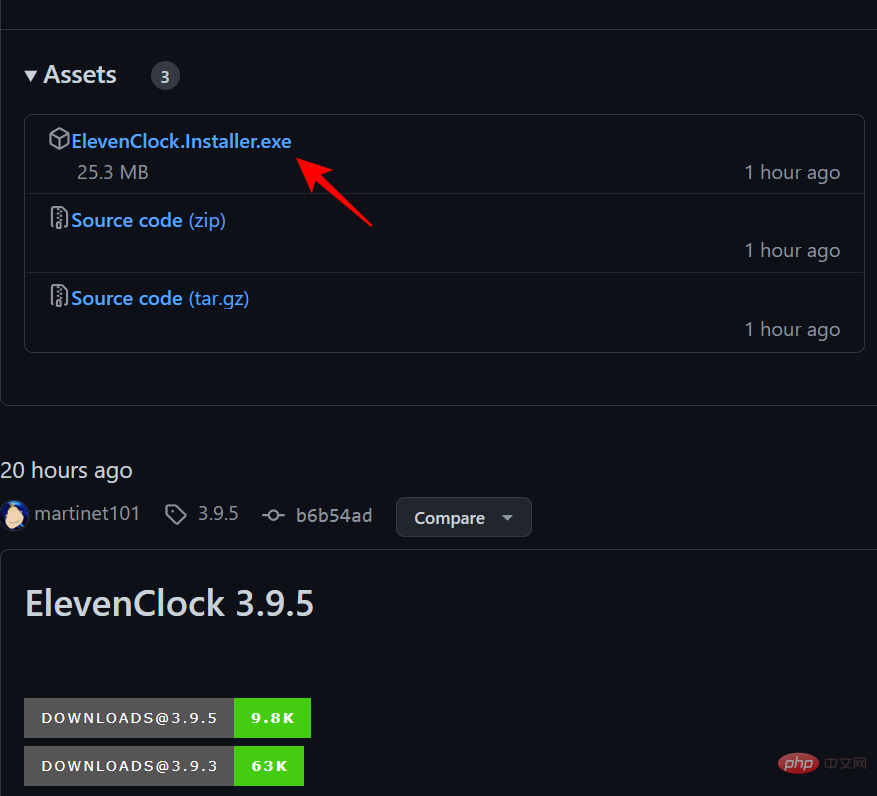
Click " Keep" to start the download.
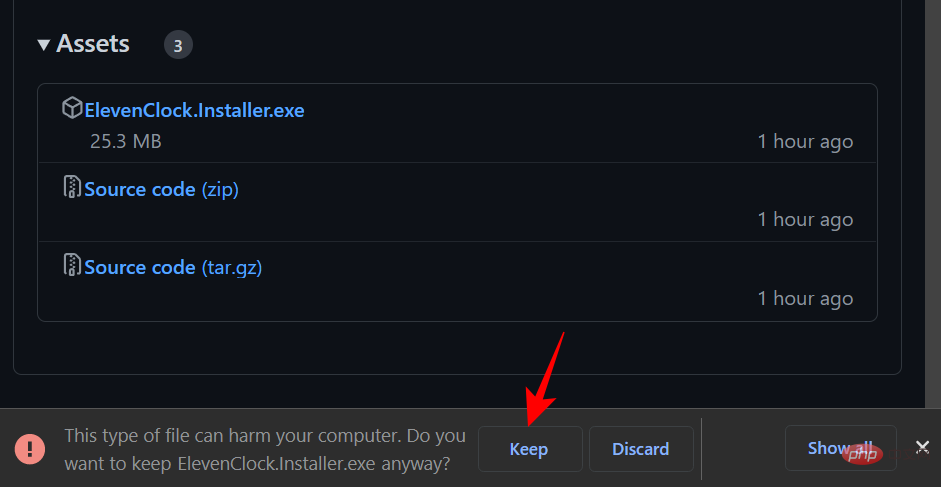
After downloading, run the executable file. If you see the Windows Protect Your PC screen, click More Info.
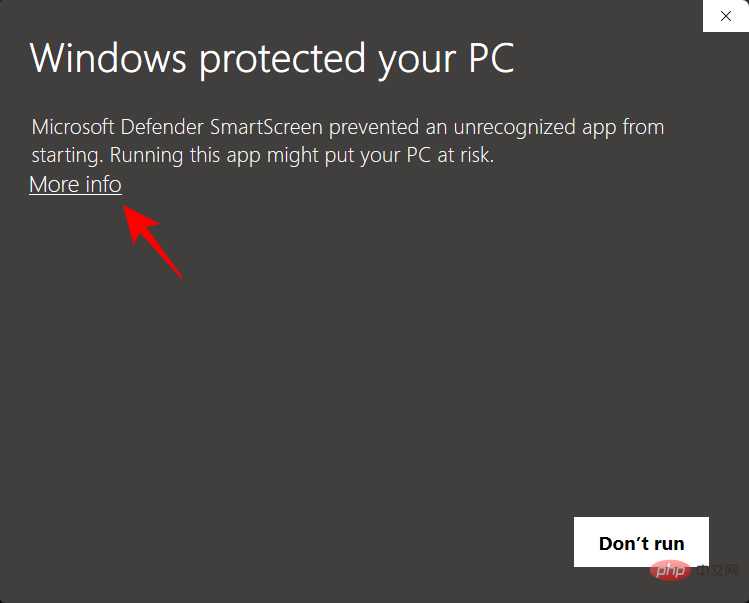
Then select Run anyway.
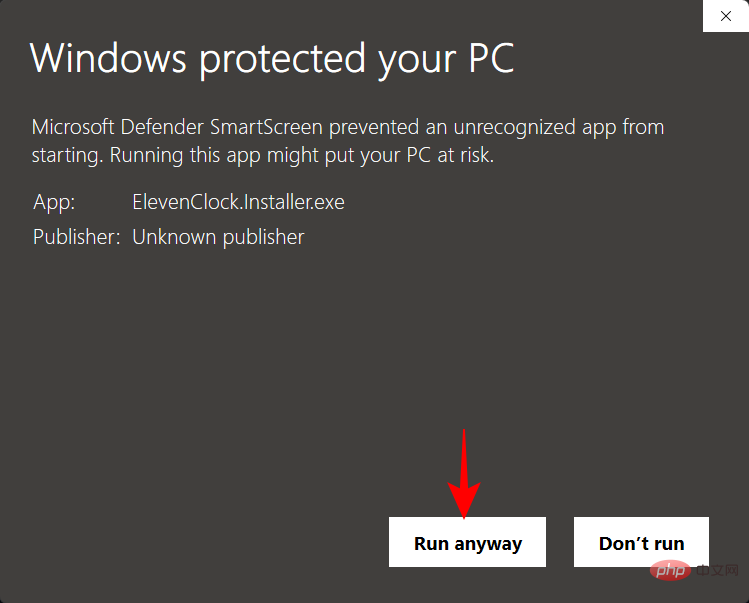
Click OK.
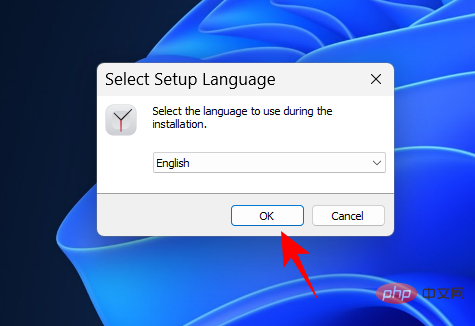
Click Next.
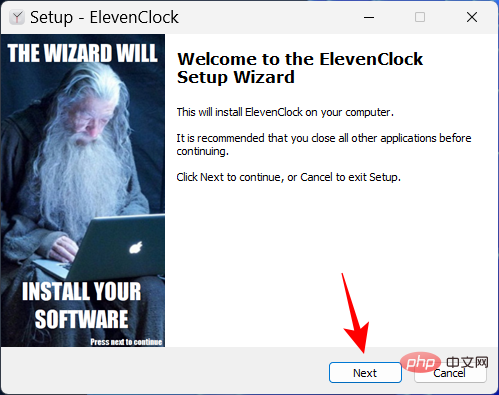
Accept the license agreement and click Next.

Then click Install.
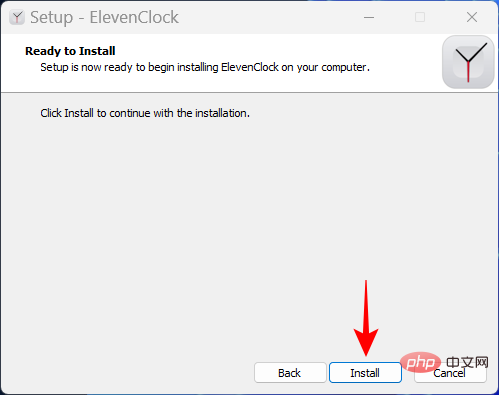
After the installation is complete, click Finish.
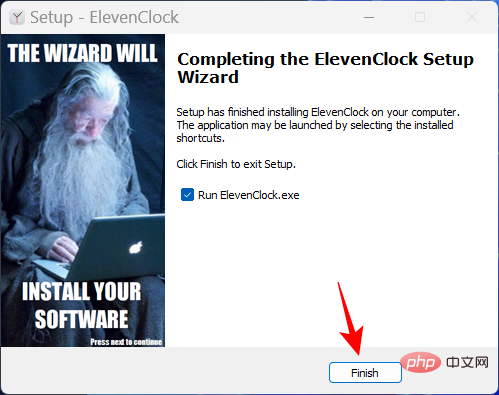
After ElevenClock is opened, click "Start".
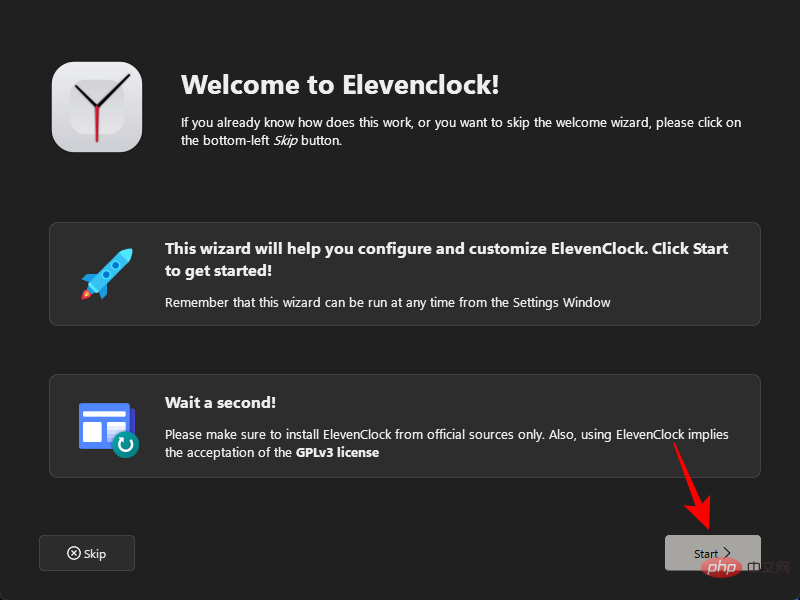
Choose whether you want to synchronize with Internet time or just keep local time. Then click the next arrow.
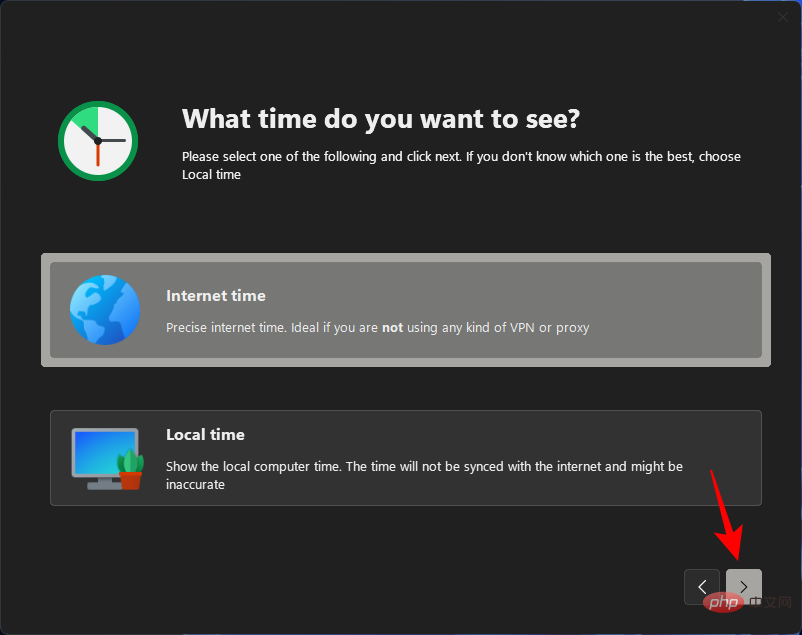
Select whether you want to hide or show the clock during full screen and click the next arrow.
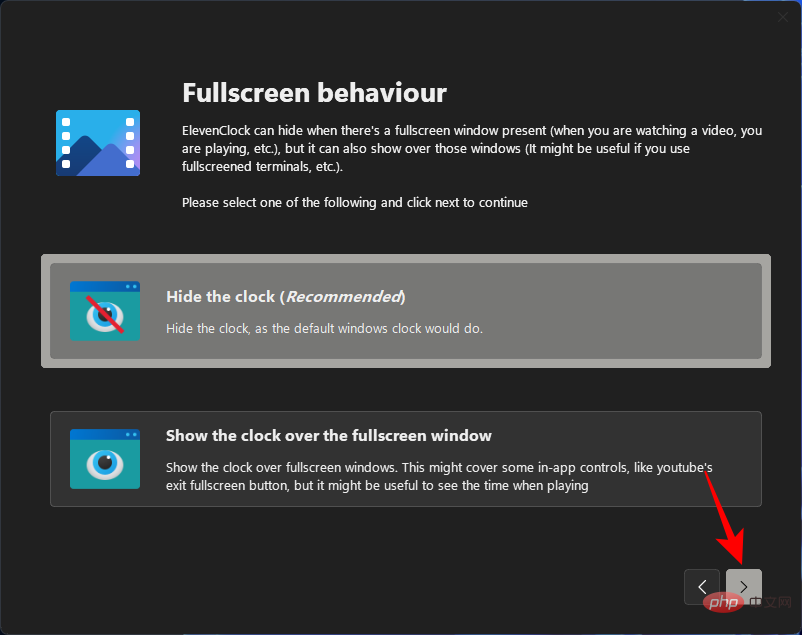
Now, select feet. Second and click the next arrow.
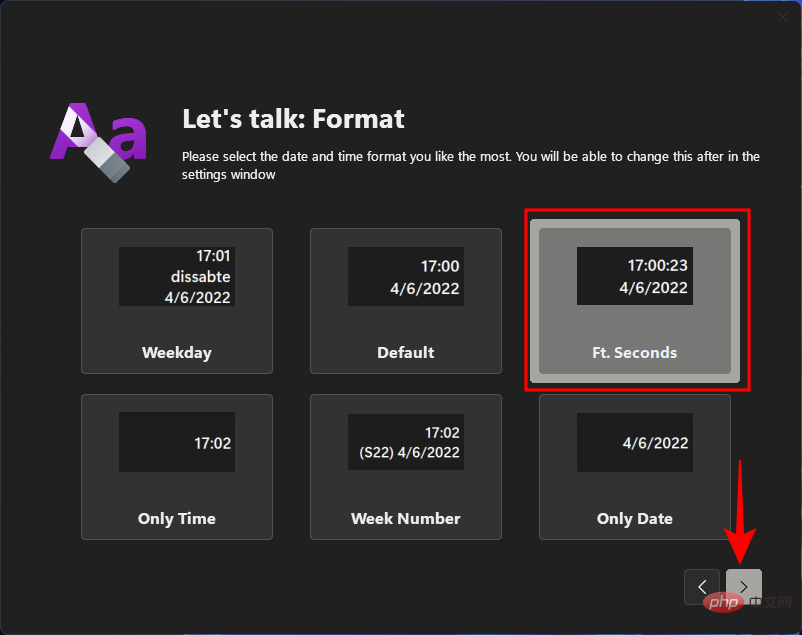
#After selecting this format, you should see the seconds in your system tray clock.
On the next screen you will be able to choose a style for your clock. Select one and click the next arrow.
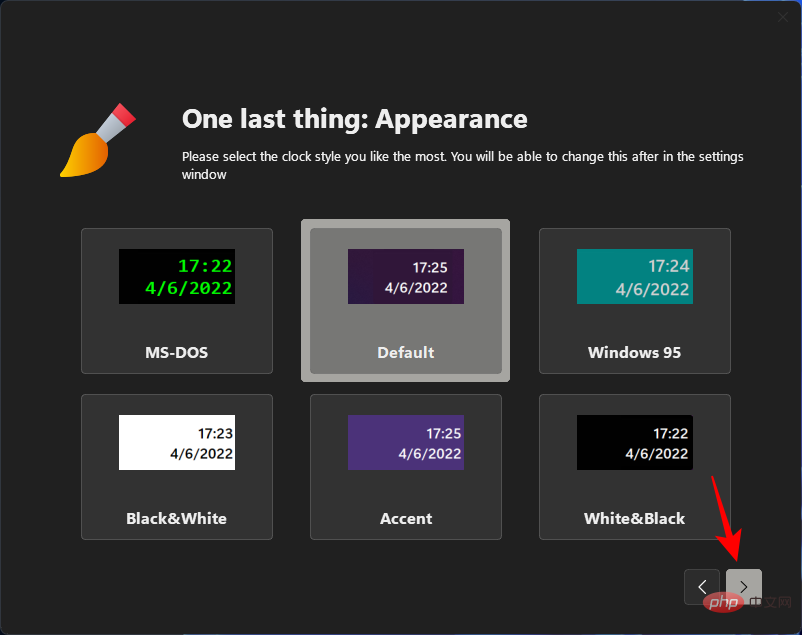
Finally, click Finish.
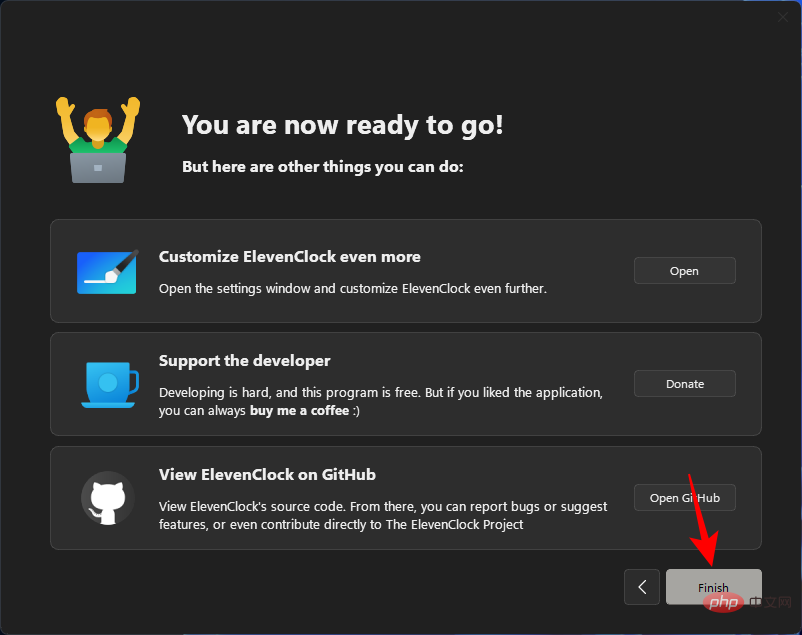
Where were the seconds all this time?
People may be wondering why Microsoft hasn’t updated the system tray clock on Windows for as long as it shows something as ostensibly small as the seconds. The reason for this is primarily performance.
Every time you update the second unit in the clock, your computer spends valuable resources updating, paging, and redrawing the taskbar clock. On a computer with multiple users, the same resource is divided multiple times to perform the same operation. Although modern computers are more than capable of handling these repetitions, good performance is as much a result of task prioritization as it is of capability.
After all, why would Windows prioritize updating the seconds of the clock, it really attracts scrutiny and consumes a lot of resources, when it could use the same amount of resources for better things, like predicting your next move? One to type a sentence or make sure a video plays smoothly?
As Microsoft emphasized in a blog post earlier this year, "Updating the seconds in the taskbar clock is not essential to the user interface." However, they seem to have changed their minds and at least let users choose for themselves. honor!
FIX: Option not found to display seconds in system tray clock
If you cannot find "Show seconds in system tray clock" in taskbar settings Number" option, it's likely because the update hasn't been rolled out to you yet. At the time of writing this tutorial, this feature is only available in Developer Build 25247, which is available by becoming part of the Windows Insider Program. Alternatively, you can wait for Microsoft to gradually roll it out with stable builds.
Fix: Showsecondsinsystemclocknot working
In most cases if the setting is configured to show seconds in the system tray clock it does not work immediately worked, a quick system reboot or restarting Windows Explorer might do the trick. This can happen if this is the first time you turn on seconds in the system tray clock because it takes some time to prepare the channel to start displaying seconds. Restarting the system will reinstall the package and reread the registry files.
FAQ
In this section, we’ll answer some frequently asked questions about displaying seconds in the Windows 11 clock.
How to display seconds in Windows 11 clock?
If you are using Dev build 25247 or higher, you can go to Taskbar Behavior in Taskbar Settings and turn on Show seconds in system tray clock. See our tutorial above for additional methods and information.
How to display seconds on computer clock?
There are several ways to display seconds on your computer clock. You can use a third-party app like ElevenClock, or turn on native support for seconds in the system tray clock. See our tutorial above for more information.
The above is the detailed content of How to Use Settings (And 4 Other Ways) to Show Seconds in Windows 11 Taskbar Clock. For more information, please follow other related articles on the PHP Chinese website!

Hot AI Tools

Undresser.AI Undress
AI-powered app for creating realistic nude photos

AI Clothes Remover
Online AI tool for removing clothes from photos.

Undress AI Tool
Undress images for free

Clothoff.io
AI clothes remover

Video Face Swap
Swap faces in any video effortlessly with our completely free AI face swap tool!

Hot Article

Hot Tools

Notepad++7.3.1
Easy-to-use and free code editor

SublimeText3 Chinese version
Chinese version, very easy to use

Zend Studio 13.0.1
Powerful PHP integrated development environment

Dreamweaver CS6
Visual web development tools

SublimeText3 Mac version
God-level code editing software (SublimeText3)

Hot Topics
 1658
1658
 14
14
 1415
1415
 52
52
 1309
1309
 25
25
 1257
1257
 29
29
 1231
1231
 24
24
 How to disable taskbar thumbnail preview in Win11? Turn off the taskbar icon display thumbnail technique by moving the mouse
Feb 29, 2024 pm 03:20 PM
How to disable taskbar thumbnail preview in Win11? Turn off the taskbar icon display thumbnail technique by moving the mouse
Feb 29, 2024 pm 03:20 PM
This article will introduce how to turn off the thumbnail function displayed when the mouse moves the taskbar icon in Win11 system. This feature is turned on by default and displays a thumbnail of the application's current window when the user hovers the mouse pointer over an application icon on the taskbar. However, some users may find this feature less useful or disruptive to their experience and want to turn it off. Taskbar thumbnails can be fun, but they can also be distracting or annoying. Considering how often you hover over this area, you may have inadvertently closed important windows a few times. Another drawback is that it uses more system resources, so if you've been looking for a way to be more resource efficient, we'll show you how to disable it. but
 How to solve the problem of Win11 taskbar icon turning black
Jan 02, 2024 pm 04:25 PM
How to solve the problem of Win11 taskbar icon turning black
Jan 02, 2024 pm 04:25 PM
If we find that our taskbar icon has turned black when using win11 system, this may be because we have turned on dark mode. We only need to change it to light mode in the color settings. Here is a guide Get up and sort it out. What to do if win11 displays black taskbar icons: 1. First click on a blank space on the desktop, and then select "Personalization" in the right-click menu 2. Click "Color" on the right side of Personalization 3. Then select the mode and change it 4. After the setting is completed, we will find that our taskbar icon becomes white.
 How to pin the Win11 taskbar
Jan 04, 2024 pm 04:31 PM
How to pin the Win11 taskbar
Jan 04, 2024 pm 04:31 PM
In previous Windows systems, we often used the function of locking the taskbar to avoid misoperation of the taskbar. However, many users found that they could no longer lock the taskbar after updating the win11 system. This is actually because Microsoft has canceled this function. The following is Just follow the editor and take a look. How to lock the taskbar in win11: Answer: Unable to lock. 1. Microsoft has canceled the function of locking the taskbar in the win11 system, so we cannot lock the taskbar now. 2. Generally speaking, we can right-click on the blank space of the taskbar to lock the taskbar. 3. But in win11 system, right-clicking on the blank space of the taskbar only has the taskbar settings option. 4. If we open the taskbar settings, the corresponding taskbar lock cannot be found.
 What should I do if the Win7 taskbar does not display the icon? How to solve the problem of the computer taskbar icon disappearing
Jun 09, 2024 pm 01:49 PM
What should I do if the Win7 taskbar does not display the icon? How to solve the problem of the computer taskbar icon disappearing
Jun 09, 2024 pm 01:49 PM
Recently, many users using Win7 system have found that the icons in the taskbar suddenly disappeared, which makes the operation very inconvenient and they do not know how to solve the problem. This article will introduce to you how to solve the problem of disappearing taskbar icons in Win7 system. Bar! Cause Analysis When encountering such a situation, there are generally two situations: one is that the taskbar on the computer does not really disappear, but is just hidden, and the other is that the taskbar does disappear. Method 1: 1. There is a situation that you need to confirm first, that is, when the mouse is placed at the bottom of the screen, the taskbar will be displayed. You can directly click the mouse on the taskbar and select "Properties". 2. In the dialog box that opens, click & on the "Hide taskbar" option.
 How to reduce the height of the taskbar in win11? Tutorial on resizing the taskbar in Windows 11
Feb 29, 2024 pm 12:37 PM
How to reduce the height of the taskbar in win11? Tutorial on resizing the taskbar in Windows 11
Feb 29, 2024 pm 12:37 PM
When we use win11, we will find that the height of the taskbar is a bit high, which feels a bit unsightly to some users. So how to reduce the height of the win11 taskbar? Users can directly click the Registry Editor under the Start menu, and then find the Advanced folder to operate. Let this site carefully introduce to users how to adjust the taskbar size in Windows 11. How to resize the taskbar in Windows 11 First, we need to open the Registry Editor. You can open the registry editor by clicking the Start menu and entering "regedit" in the search box, or by pressing the Win+R key combination to open the Run function and entering "regedit".
 How to make the Win11 taskbar black? Introduction to how to set the black taskbar in Win11
Apr 22, 2024 pm 06:40 PM
How to make the Win11 taskbar black? Introduction to how to set the black taskbar in Win11
Apr 22, 2024 pm 06:40 PM
Some friends also want the taskbar to turn black after changing the dark wallpaper on their computers, but they don’t know how to do it. Let’s take a look at the specific methods below! 1. Right-click an empty area in the taskbar and select "Taskbar Settings." 2. In the taskbar settings window, find the "Appearance" tab and click it. 3. Under the "Appearance" tab, find the "Taskbar Background" option and click the drop-down menu. 4. Select "Black". 5. Close the "Taskbar Settings" window. Taskbar beautification Xiaozhi Eye Protector is a very easy-to-use win11 transparent taskbar tool. It supports taskbar transparency, taskbar beautification, and multiple styles to beautify the taskbar interface, making your computer interface more beautiful. Xiaozhi Eye Protector Eye Baby (click to download now) Xiaozhi Eye Protection
 How to expand the stacked display of the Win11 taskbar? Tutorial on stacking and expanding the Win11 taskbar
Jan 29, 2024 am 11:33 AM
How to expand the stacked display of the Win11 taskbar? Tutorial on stacking and expanding the Win11 taskbar
Jan 29, 2024 am 11:33 AM
When we use win11 system, we will find that our taskbar windows are merged. Many users don't like this operation very much. So how to expand the win11 taskbar stacking? Users can directly click on the taskbar settings under the right button, and then directly find the taskbar corner overflow option in the right menu to operate. Let this site carefully introduce to users how to expand the win11 taskbar stack. How to expand taskbar stacking in Windows 11 Method 1. 1. Right-click on a blank space on the taskbar and select Taskbar Settings. 3. After clicking the taskbar corner overflow, turn on the switch for the application icon to be displayed. Method two: 1. We need to use a software to achieve this, search, download and install star by ourselves
 Tutorial on how to set up glass effects on the Windows 11 taskbar
Jan 05, 2024 pm 07:07 PM
Tutorial on how to set up glass effects on the Windows 11 taskbar
Jan 05, 2024 pm 07:07 PM
In the win10 system, we can set the transparency effect, frosted glass effect, etc., so can we set the frosted glass effect in the win11 system? In fact, it is possible, but we need to use the functions of third-party software. Let’s follow the editor to take a look at the specific methods. How to set the win11 taskbar glass effect: 1. In the win11 system, we can only set the transparency effect, color and depth mode of the window. 2. Therefore, if you want to set up frosted glass special effects, you need to use third-party software. 3. First download a software called "classicshell" on the Internet. 4. After the download and installation is completed, you only need to open the software, find the "Taskbar" tab, and set the "frosted glass" feature in the appearance.


